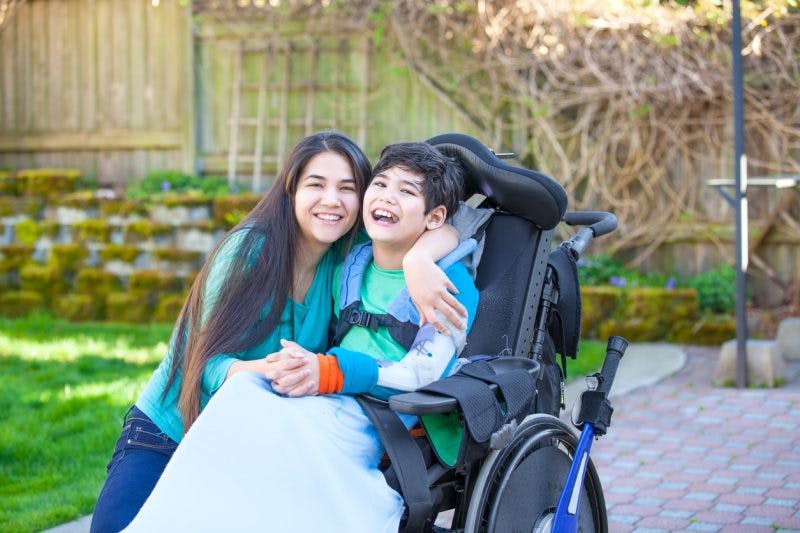Both cerebral palsy and muscular dystrophy can involve abnormal muscle tone along with poor balance and posture. However, the two conditions are distinctly separate.
To help you understand the main differences between cerebral palsy and muscular dystrophy (particularly Duchenne muscular dystrophy, the most common type), this article is going to compare and contrast the two conditions side-by-side.
Comparing Cerebral Palsy and Muscular Dystrophy
Both cerebral palsy and muscular dystrophy start in early childhood and affect the muscles. However, they have many distinctions.
Let’s compare and contrast key points between cerebral palsy and muscular dystrophy:
Causes
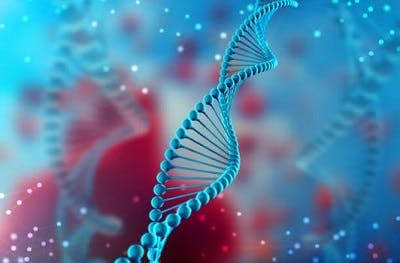
Cerebral palsy is caused by damage to the brain before or during birth, or in early childhood.
Common causes of cerebral palsy include:
- Lack of oxygen in the brain
- Premature birth
- Bleeding in the brain
- Genetic conditions
- Brain infections
- Seizures
- Traumatic head injury
Muscular dystrophy is caused by a genetic mutation in the DNA where the body cannot produce a protein called dystrophin. Dystrophin helps strengthen muscle fibers and keeps them intact during contractions.
Cerebral palsy is considered a neurological disorder while muscular dystrophy is considered a genetic disorder. While genetic factors can contribute to the occurrence of cerebral palsy, there is no single gene for cerebral palsy like there is for muscular dystrophy.
Symptoms

Both cerebral palsy and muscular dystrophy can be characterized by abnormal muscle tone, which affects balance, posture, and control over movements. The conditions often go unnoticed in infants until they start to demonstrate developmental delays. Most children are diagnosed between 18-24 months.
While cerebral palsy is mostly characterized by high muscle tone, there is also a type of cerebral palsy that is characterized by hypotonia (low muscle tone). Muscular dystrophy is characterized by the progressive weakening of the muscles. Those with muscular dystrophy demonstrate decreasing muscle tone as their condition progresses.
By the time children with muscular dystrophy reach their teenage years, they’ll likely experience respiratory and cardiac problems. This is because the heart and diaphragm are muscles, and the lack of dystrophin can cause them to dysfunction.
Associated Conditions
Some co-occurring health conditions that are commonly experienced by individuals with cerebral palsy and individuals with muscular dystrophy include:
- Intellectual disabilities (~50% in CP, ~30% in MD, ~1-3% in general population)
- Epilepsy (~30-50% in CP, 6.4–7.9% in MD, 1.2% in general population)
- Scoliosis (~20-25% in CP, ~75-90% in MD, ~2-3% in general population)
Prevalence

Muscular dystrophy is an X-linked recessive disease, which makes it much more common in males than females.
Males have 1 X chromosome and 1 Y chromosome, while females have 2 X chromosomes. If one X chromosome is mutated in a female, the other one may still be functional and dominate over the mutation; however, if the single X chromosome in a male is mutated, they can have muscular dystrophy.
Duchenne muscular dystrophy affects approximately 1 in every 3,500 to 5,000 male births. It primarily affects boys but can also affect girls. “Approximately 8% of female Duchenne muscular dystrophy carriers are manifesting carriers and have muscle weakness to some extent,” according to this study.
Cerebral palsy is the most common childhood motor disability and it affects about 2-3 in every 1000 births. Like muscular dystrophy, CP is more common amongst males than females, but for unknown reasons and to a much lesser extent.
Life Expectancy
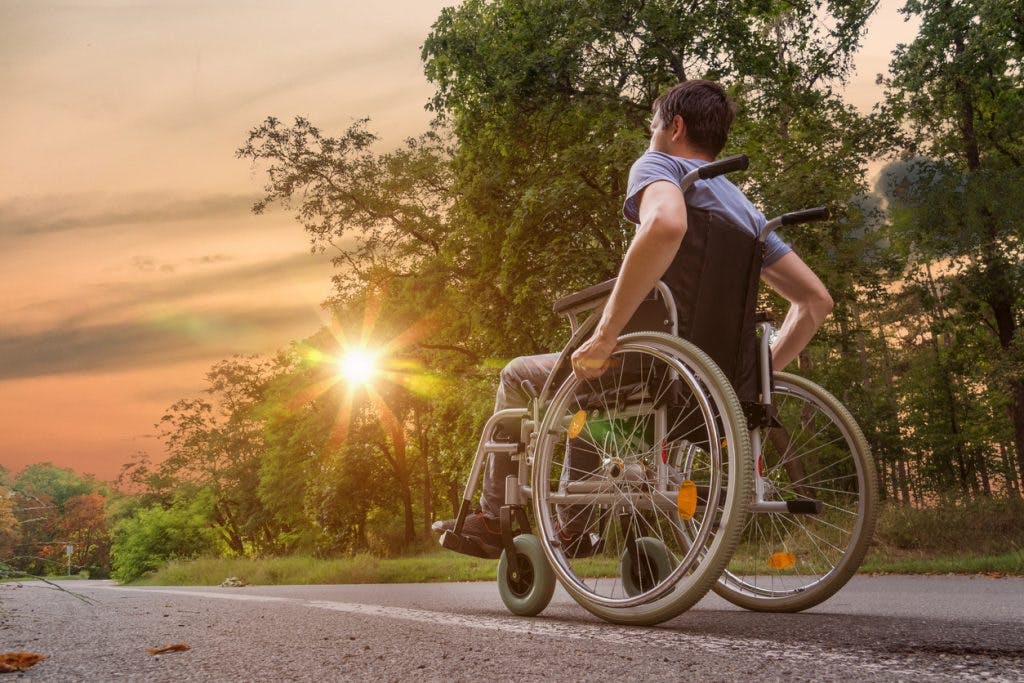
Cerebral palsy is static, meaning that the severity of the brain damage causing it will not get worse over time. Every case of cerebral palsy is unique, so depending on the severity of damage to the brain, management of symptoms, and overall health, life expectancy for individuals with CP can vary quite a bit.
In contrast, muscular dystrophy is a progressive disorder, and its severity only worsens with time. By the time individuals with muscular dystrophy become 15 years old, over 90% are using wheelchairs.
Historically, people with muscular dystrophy rarely lived past their teen years; however, thanks to innovations in healthcare, survival into the 30s, 40s, and even 50s is becoming increasingly more common.
Management
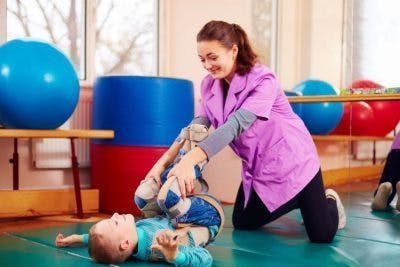
Management for cerebral palsy or muscular dystrophy requires personalized plans that focus on each individual’s unique abilities, concerns, and needs.
Generally, management interventions will include:
- Physical therapy to optimize gait, improve range of motion, and strengthen underused muscles through exercise
- Occupational therapy to improve independence by practicing activities of daily living
- Speech therapy to improve communication and eating/swallowing skills
- Orthotics to enhance musculoskeletal alignment
- Medications to relieve symptoms like pain, abnormal muscle tone, etc.
- Surgery to correct muscle tone, scoliosis, etc.
As symptoms of muscular dystrophy start to worsen, doctors may prescribe corticosteroids like prednisone or deflazacort to help delay muscle degradation and prolong muscle functions.
Additionally, as breathing functions start to weaken, a ventilator may be necessary for breathing support. For the weakening of cardiac functions, medications like corticosteroids, ACE-inhibitors, and beta-blockers will be prescribed.
Understanding the Differences Between Cerebral Palsy and Muscular Dystrophy
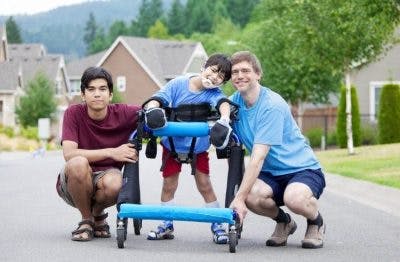
Let’s review some of the main similarities and differences between cerebral palsy and Duchenne muscular dystrophy.
Cerebral palsy and muscular dystrophy are both childhood neuromuscular disorders. Muscular dystrophy is genetic and caused by a deletion in the DNA sequence that codes for the production of dystrophin, a protein that protects muscles.
Unlike muscular dystrophy, there is no single gene for cerebral palsy; however, a combination of genetic factors may increase one’s likelihood of developing CP. Cerebral palsy is static (the brain damage will not worsen over time) and muscular dystrophy is progressive (muscle degradation worsens with increasing age).
Luckily, thanks to advances in healthcare and medicine, muscle functions in individuals with muscular dystrophy are being prolonged, which is leading to longer life expectancies. We hope this article helped you understand the primary distinctions between these two conditions.

